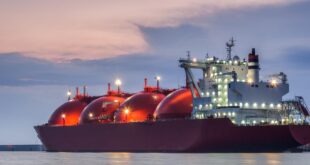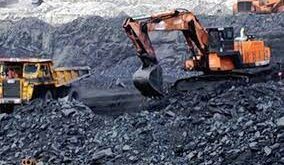Loss leader pricing involves selling a product below cost to get customers through the door to buy other highly profitable items. Walmart. Toys ‘R’ Us. Gillette and Nespresso have successfully deployed this strategy. Now. to this list. one can add Russian state-owned Gazprom.
Gazprom’s US$55 billion gas pipeline is its largest and most expensive project. and costs are estimated to take 10-15 years to recover. But with oil prices – to which gas prices are indexed – about 40 per cent lower than in 2014 when the deal was concluded. the pipeline can only be either borderline profitable or an outright loss.
The gas pipeline was meant to help Gazprom fend off rival Russian gas producers that have chipped away at its domestic market share. Coupled with demand declines in post-Soviet states and flat demand in Europe. Gazprom had excess gas to sell to China.
However. the excess gas is in its west Siberian fields. whereas the pipeline is filled by new fields in east Siberia. Ironically. it may open up opportunities for Gazprom’s competitor. Rosneft. which owns gas fields in east Siberia that can supply later phases more economically than Gazprom can.
Rosneft also has vast experience in China. having played a big role in Russia becoming China’s largest oil supplier since 2016.
The Power of Siberia is often regarded as a blowback against sanctions imposed by Europe and the United States following Russia`s annexation of Ukraine. a way for Russia to play off Europe’s gas demand against China’s. and a reminder that China. a major market for US liquefied natural gas. has alternatives.
However. Europe and China are supplied by different export pipelines in different resource zones. Moreover. Russia is not about to replace Europe with China: Europe accounts for 70 per cent of revenues at Gazprom. which contributes 5 per cent of Russia’s economy.
The company is projected to maintain its of Europe’s requirements to 2040 and has continued to invest in alternative pipelines into Europe.
As for US LNG. northeastern China – the area supplied by the pipeline under phase one – lies outside the target customer base. Moreover. gas from the pipeline is meant to displace the heavy use of coal in the region. rather than compete with other gas sources.
Despite the close personal ties between President Xi Jinping and President Vladimir Putin. Sino-Russian relations are highly asymmetrical. China leads Russia by a wide margin economically.
The pipeline may reduce this asymmetry by increasing China’s dependence on Russian gas from almost zero to one-sixth of China’s import requirements and 9.5 per cent of its total gas consumption.
But. given that China has a well-diversified base of gas suppliers and supply routes. Russia’s dedicated pipeline to China may well leave Russia with increased dependence on Chinese demand instead.
All of this suggests that the pipeline makes sense only as a loss leader to entice China to sign off on a broader range of energy and other projects with Russia. such as its Arctic Circle LNG project or a second Russia-China gas pipeline.
With the Power of Siberia pipeline progressing and Xi’s promise to achieve blue skies through coal-to-gas switching. negotiations on the second pipeline have begun.
This would boost Gazprom’s revenues and prestige. and allow Russia to play off European and Chinese demand since the gas for the second pipeline would come from the same fields. It may also curtail the further spread of Chinese influence in Central Asia. which Russia regards as its backyard.
Given that negotiations for the first pipeline took 10 years. when the second will be commissioned remains to be seen.
China’s slowing economic growth. easing of coal-to-gas policy. possibility of more US LNG imports if tariffs lift with trade war de-escalation. and the young age of its coal-fired power plants suggest that while China’s demand for imported gas grows. existing supplies may be adequate for the next decade.
Nevertheless. marketing gurus would probably still approve of the loss-leader strategy behind Russia’s Power of Siberia gas pipeline to China.
 Iran Energy News Oil, Gas, Petrochemical and Energy Field Specialized Channel
Iran Energy News Oil, Gas, Petrochemical and Energy Field Specialized Channel



